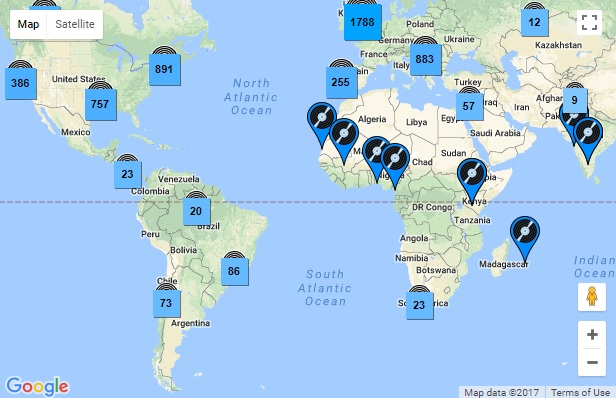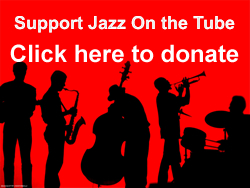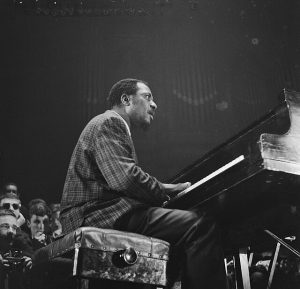Blog, Latin Jazz, Puerto Rico, Video and audio
“Mosaíco Puertorriqueño: Dedicated to Rafael Hernandez” arranged by Eugene Marlow, Ph.D.
– Ken McCarthy
Jazz on the Tube
P.S. Our unique programming is made possible by help from people like you. Learn how you can contribute to our efforts here: Support Jazz on the Tube
Thanks.
Blog, Cuba, Travel to Cuba
How to get there? Is it expensive?
It’s easy to get to Cuba. Just get on a plane. There are scheduled flights everyday out of places like New York City and Miami.
Is travel in Cuba expensive?
Yes and no.
If you go with a packaged tour or use the “normal” travel industry, yes. Cuba is no bargain. Budget at least $400 a day (probably more) plus your airfare.
You could have an exponentially better time – better housing, better food, better entertainment – for about $100 a day.
How do you do that?
You have to go to an informed person.
How do you do that?
Easy.
– Ken McCarthy
Jazz on the Tube
P.S. Our unique programming is made possible by help from people like you. Learn how you can contribute to our efforts here: Support Jazz on the Tube
Thanks.
Blog
Interview
Download the mp3 here
Some ideas are so brilliantly simple, straightforward and useful, you wonder why no one ever thought of them before.
Professional cameraman Rob Wagner visits with a different modern jazz master every month and asks them perceptive, insightful questions about their lives, their careers and their art.
Amazingly, some of the artists have never been interviewed this way in their entire careers.
Short clips from some of the 70+ interviews Rob’s done so far are available for free on his site, but they just represent the tip of the iceberg of what he’s done – and continues to do.
Visit and be amazed by this ongoing intelligent love letter to the men and women who make jazz: ArtistsofJazz.com
– Ken McCarthy
Jazz on the Tube
Music credit: The Jazz on the Tube podcast theme song is “Mambo Inferno” performed by The Manhattan School of Music Afro-Cuban Jazz Orchestra conducted by Bobby Sanabria from the CD ¡Que Viva Harlem!

Blog

Not every great musician and group has been recorded.
But even for those who have, there’s at least as much great stuff hidden away in record company vaults (or lost) that never made it into a commercially available product.
There’s another “music gap” and that’s the vinyl recordings that never made it to CD, or if they did are hard, if not impossible, to find.
That’s why I still have a turntable and when I get a spare moment hit the bins at my local record store.
Now there’s a free online service you can use to find record stores anywhere on earth.
You can check it out here
VinylHub: https://www.vinylhub.com
– Ken McCarthy
Jazz on the Tube
P.S. Our unique programming is made possible by help from people like you. Learn how you can contribute to our efforts here: Support Jazz on the Tube
Thanks.
Afro-Cuban culture, Blog, Cuba, Cuban Jazz, Latin Jazz, Video and audio
The deeper you dive into Cuban music, the more amazing it reveals itself to be.
Sometimes I have to ask myself is Cuba a country – or an alternate universe?
How can such a small country – with less people than Ohio – generate so much musical accomplishment?
Notice: I don’t day “talent.”
Talent is a dime a dozen. Realization of talent is the thing that matters.
It takes dedication and relentless study – and a higher moral purpose – to turn raw musical talent into accomplishment the way the Cuban people have.
Here’s an example of all the various threads of Cuban music brought together on one stage: reverence for classical music, immersion in Afro-Cuban rhythms, affection for popular genres, and hip-as-hell jazz sensibilities.
Who is this flute playing musical visionary dressed in white?
Meet: Orlando Valle, aka Maraca. Enjoy and Viva Cuba!
How about another one? The small unit works out on “Manteca”
– Ken McCarthy
Jazz on the Tube
P.S. Our unique programming is made possible by help from people like you. Learn how you can contribute to our efforts here: Support Jazz on the Tube
Thanks.
Afro-Cuban culture, Blog, Cuba, Cuban Jazz, Video and audio
The members of the group Los Terry talk about two things:
1. The musical instrument the chekere
2. The training that master musicians in Cuba receive which is unique in the world
Tell me where else on the planet musicians master classical music, local popular music, indigenous music, religious music and jazz.
There’s a reason Cubans have had such a out-sized impact on world music: Their training, discipline and versatility are second to none.
The conversation is a bit slow moving at times and a lot of it is in Spanish, but stick with it. It will give you an unparalleled insight into what goes into making a Cuban musician.
In the conversation:
Eladio Terry, the patriarch of the family, known to many as Don Pancho
Yosvany Terry
Yunior Terry
Some musical reference from the interview:
Yosvany Terry & The Afro Caribbean Quintet
More about Los Terry and Don Pancho (Eladio Terry)
Los Terry are a family of musicians from the Camaguey province of Cuba. Their unique blend of musical styles includes elements of folklore, classic charanga and modern jazz, creating a bridge across generations.
Eladio Terry, the patriarch of the family, known to many as Don Pancho, grew up surrounded by the music of the Afro-Cuban religions and learned the traditional drumming and vocal styles that date back centuries. Eladio followed the path of the apprentice drummer as he learned the prayers, songs and rhythms that accompany the religious ceremonies- watching, listening and playing for hours. Like many Cuban musicians, he also learned to play popular music styles, incorporating his knowledge of African traditions into the secular dance music of the day.
Eladio Terry’s influence in Cuban music began with the legendary charanga group Maravillas de Florida, from the town of Florida in Camaguey. He utilized the chekere with the traditional charanga format of violins, bass timbales, flute, piano, and guïro, adding an instrument widely used in the syncretized African religions that have survived and flourished in Cuba.
The chekere is an instrument made out of a gourd strung with beads that requires a sophisticated physical dexterity to produce rhythms and harmonic timbres. Eladio Terry and his sons handle the chekere like veteran basketball players taunting their opponents as they effortlessly coax rhythms and tones out of these hollow gourds.
In the early 1960s Eladio went to the newly formed Conservatory of Music in Havana. There he met fellow music students from Mali who became legendary figures in contemporary African music when they formed Maravillas du Mali and wrote the theme song for Radio Mali in a Cuban charanga style. Eladio recalls that they had assimilated much of the Cuban rhythms but could not understand the role of the bass. He claims credit for teaching them the subtleties of the tumbao or “swing” of the bass that can’t easily be notated or understood without grasping the fundamental structure of Cuban music.
Traveling with the Maravillas de Florida in the 1970s Eladio visited many African countries as well as Eastern Europe and the Middle East. As director, violinist and arranger he was able to incorporate many of the musical influences of his travels into his music. The recordings of the Maravillas from this period are spiced with African-based rhythms, harmonies and timbres that he introduced, giving the charanga a very Afro-Cuban feel.
Yosvany recalls that when the Maravillas played Son Wambari at outdoor dances people in the audience were seized by trances when they heard the Yoruba chants and the familiar incantations calling out to Elegua.When the Maravillas toured Africa they found that many people understood the meaning of the words to the Yoruba and Congo chants that they sang which are part of religious rituals in Cuba.
Cuba’s nationwide musical education program has had a profound effect on the development of countless talented musicians. Cuba has always had a wealth of musical talent but few of the youth from poor families had the resources to receive the formal training and practice time that would allow them to master forms of music other than those with which they had direct experience. Eladio Terry’s sons, Yosvany, Yoel and Yunior have all passed through intense musical conservatory training as well as paying their dues in popular music groups and have sharpened their skills playing improvisational jazz.
– Source: Excerpted from the excellent resource AfroCubaWeb.com
– Ken McCarthy
Jazz on the Tube
P.S. Our unique programming is made possible by help from people like you. Learn how you can contribute to our efforts here: Support Jazz on the Tube
Thanks.




